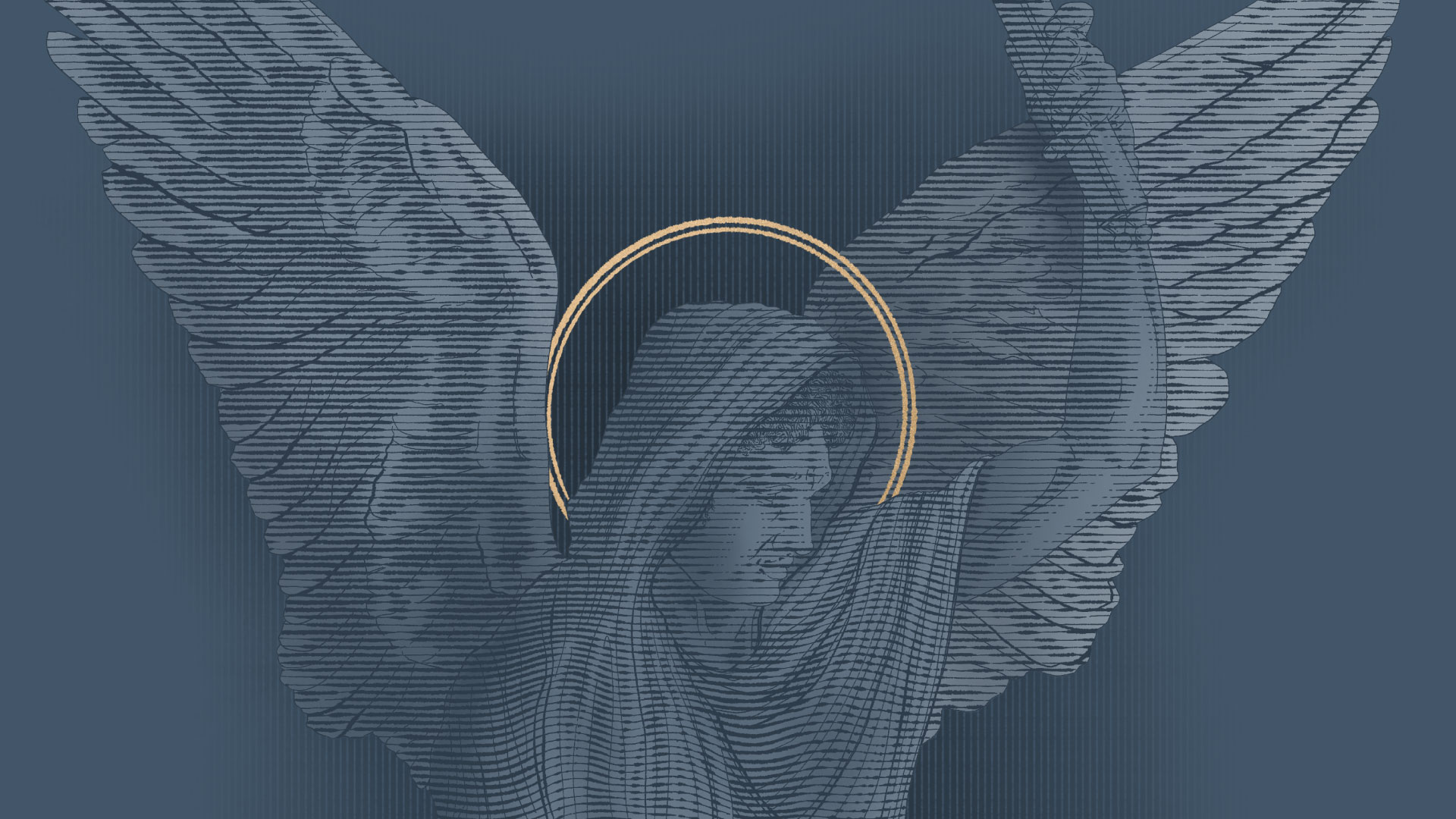
Holy Week Day-by-Day
The 40-day season of Lent culminates in Good Friday and Easter, but before there is Good Friday, there is Palm Sunday, Holy Monday, Holy Tuesday, Spy Wednesday, and Maundy Thursday; before Easter Sunday there is Holy Saturday. Just as we can’t leapfrog Good Friday to get to Easter Sunday, we can’t leapfrog these other days either. Each tells an important part of the story of Jesus’ journey toward the cross and eventual resurrection that we so need, and as Robert Webber said, “the Christian year is a gospel superstructure.” These 8 days that precede and include Easter are known as “Holy Week.” While we are “informed not ruled by tradition,” Holy Week can serve as a helpful discipleship tool as it asks us to slow down and immerse us in the days of Jesus just before His death and resurrection.
Looking at individual days, we will ask the same question: if this particular day of Holy Week’s seed were to be planted in our hearts, what might spring up from this day’s ground? How is this day a lens into Jesus’ life and how is this day a mirror to your own life? While we can’t full take in every day, remember that we return year after year. Over time, each day’s meaning and depth will increase!
Day 1: Palm Sunday
While Jesus picked a donkey to ride into Jerusalem (representing humility and peace, thus fulfilling Zechariah 9:9), the people interestingly picked palm branches (representing victory) to welcome Jesus. They assumed that Jesus was coming in as the new king/sheriff who would kick out the evil Roman oppressors similar to Simon Maccabee a generation prior. This reveals that people were still interpreting Jesus through their lens of expectations at this moment: the Messiah vanquishing their enemies. Ironically many of the same people shouting “Hosanna” will be shouting “Crucify him” a few days later, revealing themselves to be Jesus’ enemies… The same crowds who took over their cloaks to make way for Jesus’ entrance into Jerusalem would have Jesus stripped of His clothes to be crucified days later outside of the city.
In Luke’s account, we’re told that Jesus weeps over Jerusalem. What a powerful image, not of a distant ruler but one who’s near enough to feel pain, grief, and anger over sin, death, and its effects on our lives. He’s the humble, weeping King who refuses to conform to our expectations. At the end of this day, He briefly stops by the Temple.
Reflect:
Comparing your heart to Jerusalem, what is your “city” like if Jesus were to come and enter it? Are there gates? What is the response to Him?
Day 2: Holy Monday
On Jesus’ first day on the job as king, He heads back to the temple but this time with a whip and some words. Jesus knew His kingship was directly tied to worship, the Temple, and prayer. God’s heart was for the Temple to be a house of prayer for all nations. As king, He would tear down any barriers keeping people from coming to God! While Jesus is gentle and lowly, He is also appropriately and measuredly angry and confrontational. He’s not emotionally flat or one-dimensional but robustly complex: the humility and weeping of Palm Sunday are held side by side with Holy Monday’s righteous anger. Both are expressions oi the Father’s heart! In Jesus, we see the Father in real time. Jesus’ brief interruption of the buying and selling of sacrifices pointed to His impending death and sacrifice a few days later as the perfect Lamb of God forever doing away with the sacrificial system. On the way to cleanse the temple, Jesus also curses a fig tree because of its fruitless state. This might seem like a random story, but fig trees often represented the nation of Israel in the Old Testament (see Jeremiah 8:13 and Hosea 9:10). In doing this, Jesus was pronouncing judgment on Israel who was out of step with God’s original purposes for her as His people.
Reflect:
Now imagine Jesus came to the “temple” of your heart. What worship might He find? Are there any tables He would flip over in His love and passion? Have any “vendors” set up shop?
Day 3: Holy Tuesday or Fig Tuesday
As Jesus and the disciples return to the temple the next day, they walk by the fig tree cursed by Jesus and find it “withered away to its roots (Mark 11:20-26). This interaction has led some traditions to call this day Fig Tuesday. Just as the fig tree was destroyed, so too would Israel and the temple be facing impending destruction in 70 AD. Though the fig tree symbolically withered, and soon the Temple would be destroyed, Jesus was coming to us as the new Temple where we could meet with God. Through the work eventually accomplished on Good Friday and Easter, we too would be filled by His Spirit that we might bear the fruit that God originally intended for His people, becoming temples of the Living God ourselves!
Reflect:
If your life was a fig tree, what kind of “season” would it be in? Where do the roots run into? By what power will it bear fruit?
Day 4: Spy Wednesday
This day has been dubbed by some as “Spy Wednesday” which reminds us of the evil scheming behind the scenes by Judas agreeing to work with the chief priests to trap and kill Jesus at the right moment. It’s also on this day that we remember Jesus’ anointing in Bethany at dinner by Mary. It’s a picture of extravagant, almost “wasteful” worship of Jesus (“Could this perfume have not been sold to give to the poor?!”) and yet Jesus commends the act… As we begin to see Jesus for who He truly is, we become less like Judas and more like Mary! We realize He’s the greatest treasure and worth laying down anything for… Instead of taking money from the chief priests like Judas, we pour out our most valuable possessions on Jesus. He saw this as a preparation for His burial and this anointing was an additional sign pointing to Jesus as our Messiah, our “Anointed One” (Isaiah 63:1-3). Many think this fragrance lingered with and on Him throughout the next couple of days! Jesus’ life being poured out as a fragrant offering would have been witnessed by Judas, Pilate, the soldiers, and even the thieves crucified at his side… Mary’s worship would have been the last thing Jesus smelled before He took His last breath.
Reflect:
Where in your life have you been most like Mary?
Day 5: Maundy Thursday
On this day begins what’s known as the final three days before Easter known as the Easter Triduum or the Paschal Triduum. These are called Maundy Thursday, Good Friday, and Holy Saturday. Maundy Thursday gets its name “Maundy” from the Latin word for “mandate.” Jesus gave His disciples a new commandment or “mandate” on this evening: to love one another. This last day that Jesus spent with His disciples is understandably chock-full of powerful interactions and conversations: they include Jesus washing His disciples’ feet, establishing the Lord’s Supper, the Upper Room Discourse, the High Priestly prayer, singing with the disciples, and then heading to the Garden of Gethsemane to pray.
Reflect:
The washing of feet can be hard to picture in our current context. Imagine that Jesus wanted to serve you by helping with something unpleasant but necessary. Maybe it’s cleaning out your car or scrubbing a bathroom floor. How does your heart respond? Will you let Him?
Observe:
For an extended guide on observing Maundy Thursday with others, please click here.
Day 6: Good Friday
It’s on this day that the Son of God was crucified. How is this day “good”? Shouldn’t it be “Bad Friday” or “Worst Friday?” Some traditions call it “Sorrowful Friday.” Others think Good Friday stems from the name “God’s Friday.” We’re not sure, but we know that in order for the goodness of Easter to be accomplished, all the events of Friday had to take place as well. Resurrection doesn’t come apart from death. Just as things accelerated on Maundy Thursday so we’re overwhelmed by the cascading events that lead us to Jesus’ death: The betrayal by Judas, abandonment by His disciples, denial by Peter, Jesus’ appearance before the Sanhedrin as well as Pontius Pilate and Herod, the release of Barabbas, the mocking and beating and torture of Jesus before Him marching to Golgotha and being nailed to a tree. A few hours later (and many details and interactions excluded here), Jesus declares “it is finished” and breathes His last and the Temple curtain tears from top to bottom. Good Friday ends with Jesus’ burial in Joseph of Arimathea’s tomb.
Reflect:
Imagine walking away after seeing the tomb closed. What are you thinking?
Day 7: Holy Saturday
Between the cries of agony of Good Friday and festive shouts of Easter Sunday is Holy Saturday. Apart from soldiers being issued to guard Jesus’ tomb on this day, the only other thing we’re met with on this day is silence. Deathly uncomfortable silence. Jesus laid to rest, along with all the hopes and dreams that dwelled in Him. There’s no easy fix, no band-aid, no immediate eject button to get us out of this hell. Just sitting in our grief and confusion. Holy Saturday invites us to both grieve the realities we’re confronted with but also turn to God as we wait. In his book “Lent,” Esau McCaulley comments about this day, “This is how the season of Lent concludes. Things are quiet. We are quiet. We stand at the tomb wondering what God will do next. Whether we have kept our fasts or failed has no bearing on the final outcome. God either has the power to raise Christ from the dead, or he does not. We are Christians because we have concluded that he does. That means we can rest.”
Observe
For an extended guide on observing Holy Saturday with reading and reflection, please click here.



